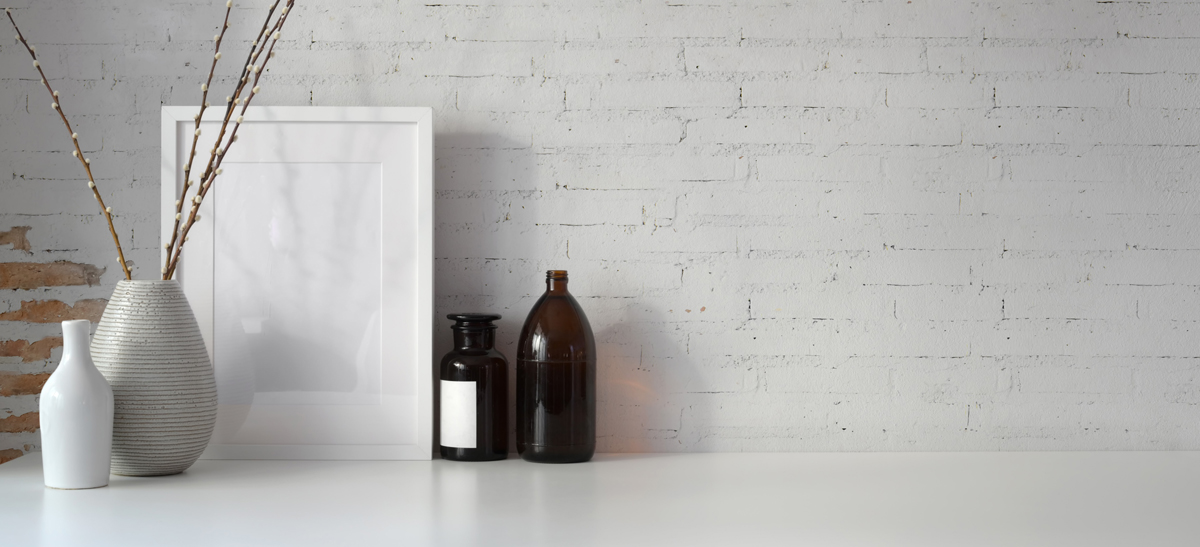Common basic ingredients used for most homemade cleaners can be bought in the grocery store.
If you want some of the more uncommon ingredients, here is a list of where you can usually find them. Not all paint or hardware stores will carry them; phone to find one that does, as some ingredients are not much in demand today.
Acetone-–hardware and drug store (is in nail polish remover)
Art Gum—art supplies
Boiled Linseed Oil-–hardware or paint store
Denatured Alcohol—hardware or drug store
Fuller’s Earth-–hardware or drug store
Gum Turpentine—hardware or paint store
Neat’s-Foot Oil-–shoe repair shop or hardware
Oxalic Acid–-hardware or drug store
Pumice Powder-–paint or hardware store
Raw Linseed Oil—hardware
Rottenstone—hardware
Stick Shellac—hardware
Tung Oil—paint store
Whiting-–hardware (or school athletic department–used to mark white lines on fields)
Painted Walls and Woodwork
Use one of the following to wash painted surfaces: 1/4 cup ammonia and 1 gal warm water, OR 1 tbsp trisodium phosphate and 1 gal warm water, OR 1/4 cup liquid dish detergent and 1 gal water. To prevent streaking, begin washing at the bottom of the wall and work toward the top; wash ceiling last. Rinse thoroughly and change rinse water frequently.
Windows and Glass
Use one of the following mixtures to clean glass and windows: to remove soil and grease, use 1/4 cup ammonia diluted in 2 qts warm water; to remove hard water deposits and soil, use 1/4 cup vinegar diluted in 2 qts warm water; to remove extra heavy soil and grease build-up, combine 1/2 cup ammonia, 2 cups rubbing alcohol and 1 gal water.
Tips- When washing windows, wash sills and cross- pieces first wipe windows with lintless cloth, paper towels or crumpled newspapers to prevent streaking, wash windows out of direct sunlight for touch-ups, keep any one of the above preparations in a spray bottle, spray on dirty area and wipe.
Upholstery
(Note: Commercial upholstery shampoos do a good job and are easy to use. However, if you wish you can use the following homemade preparation.)
Combine 1/4 cup liquid dish detergent or laundry detergent and 1 cup warm water. With a hand mixer, whip until dry suds form (the suds will look like whipped cream). Test upholstery in an unnoticeable area by applying dry suds with a cloth or soft brush and lightly scrubbing. Allow to dry. If the area looks the same but cleaner, the entire piece of upholstery may be cleaned in this manner. Shampoo only a small area at a time and use a spatula or rubber scraper to lift off dirty suds. Repeat if necessary, then wipe area with a clean cloth dipped in clear water and wrung nearly dry. Dry completely.
Tips-Keep upholstery as dry as possible while shampooing to prevent damage. For quick drying, open windows or turn on an electric fan, a dehumidifier, or an air conditioner in the same room.
Household Odors
To freshen room air, dampen cotton balls with oil of wintergreen and place out of sight but where air will touch them.
The Author:
Anne Field, Extension Specialist, with credit to MSU Extension.
